Fall Protection for PAC-Clad Peterson Standing Seam Systems
Posted by Howie Scarboro - CEO Fall Protection Distributors, LLC on Apr 26th 2024

Who is Pac-Clad Peterson?
Petersen Aluminum Corporation (PAC) started in 1965 as a metal service center for the architectural metal industry. PAC offers high-quality products with dependable lead times. Petersen operates facilities in five US locations and a regional sales office. Technical assistance and service are available locally. Today, there are over 2,400 Pac-Clad/Peterson employees across 31 plants in the US and Europe.
Peterson is an industry leader in producing standing seam metal panels and roofing accessories. Carlisle Construction Materials LLC acquired Petersen Aluminum Corp. in 2018. PAC-CLAD offers metal roofing and wall products to commercial, residential, institutional, industrial, and agricultural markets.
The focus of today's article is to investigate each of the Pac-Clad/Peterson standing seam profiles and identify the most compatible fall protection products for each style of panel. Penetrations are not allowed on standing seam panels. Therefore, workers need to use specialized fall protection devices. Let's look at each series of Pac-Clad standing seam panels and discuss the recommended safety devices that are most compatible.
Snap-Clad Panels
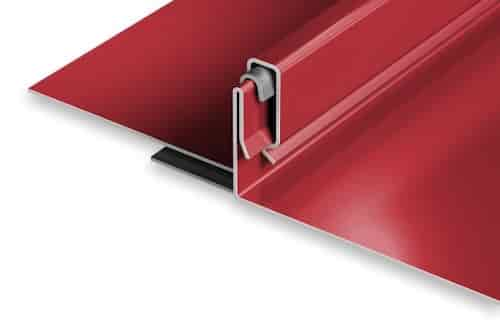
Snap-Clad metal roofing snaplock panels feature a seam height of 1-3/4" for improved structural performance and wind resistance. The Snap-Clad panels can be installed over solid wood or metal decking. A minimum 2:12 pitch is recommended in most applications. Panel width options are 10", 12", 16", and 18", and the available substrates are 22 and 24-gauge steel or .032"/.040 aluminum.
Fall Protection For Snap-Clad Panels
For steel Snap-Clad panels, SSRA1 seam clamps are the recommended seam-mounted anchor points. They're non-penetrating and help workers stay secure. SSRA2 Adjustable Roof Jacks are also handy. They let workers attach walk boards to standing seam roofs, making it safer to move around during installation and maintenance.
SSRA3 Anchor Plates are another optional adapter plate for the SSRA system. They mount on top of the SSRA1 anchors, allowing workers to set up horizontal lifelines and keeping them safe from falls across the roof surface.
It's important to note that SSRA products require a minimum of a 24 gauge steel seam for attachment. This means they only work with 22—and 24-gauge Snap-Clad panels. But if you're using aluminum Snap-Clad panels, you can try the RidgePro Steep Assist Anchors or the Super Anchor 2815 ridge anchors instead.
The RidgePro Steep Assist Anchor hooks onto the roof's ridge, while the Super Anchor 2815 is a permanent anchor point mounted under the ridge cap .
Tite-Loc/Tite-Lok Plus Panels
Tite-Loc and Tite-Loc Plus panels are mechanically field-seamed to a 90° lock (Tite-Loc) or a 180° lock (Tite-Loc Plus). Workers can install Tite-Loc panels on roofs with slopes as low as 1/2:12. Available in 12", 16" and 18" widths, Tite-Loc and Tite-Loc Plus panels can be produced in 22 and 24-gauge steel or .032 and .040 aluminum. Tite-Loc panels feature a 2" seam height, and panel curving is possible.
Fall Protection For Tite-Loc/Tite-Loc Plus Panels
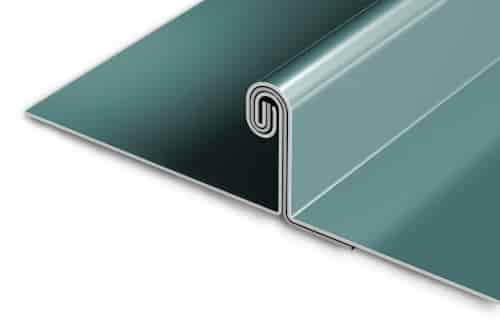
If the roof system is curved, we recommend that a trained safety professional perform a site assessment to determine the appropriate safety plan for that particular roof. The following recommendations are for non-curved Tite-Loc panels.
For steel Tite-Loc and Tite-Loc Plus panels, SSRA1 seam clamps are used as seam-mounted anchor points. They're non-penetrating and help workers stay secure without damaging the seams. SSRA2 Adjustable Roof Jacks are also helpful. They let workers attach walk boards to standing seam roofs, making it easier to move around during installation and maintenance.
SSRA3 Anchor Plate adapters can be added to the SSRA1 anchors, allowing workers to set up horizontal lifelines. This keeps them safe from falls while allowing for maximum mobility across the whole roof.
It's important to know that SSRA products are compatible with 22-gauge and 24-gauge steel panels but not aluminum panels. We recommend the RidgePro Steep Assist Anchors or the Super Anchor 2815 ridge anchors for aluminum Tite-Loc panels.
The RidgePro Steep Assist Anchor hooks onto the roof's ridge, while the Super Anchor 2815 is a permanent anchor point mounted under the ridge cap .
Snap-On/High Snap-On Standing Seam Panels
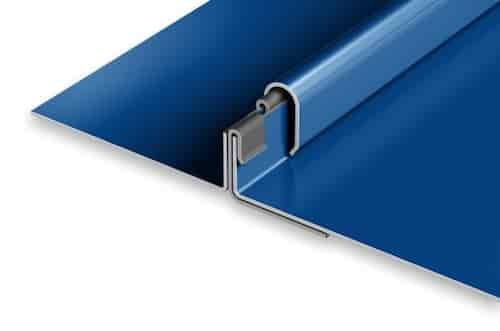
Snap-On panels have a 1" tall batten-cover seam installed over a waterproof solid substrate with a minimum of 3:12 roof pitch with hidden clips and fasteners. Curving is an option for the Snap-On Series with 24-gauge steel and .032 aluminum substrates. The Snap-On panels are available in 12", 16", 18", and 20" widths.
The High Snap-On panels are virtually the same except for the taller 1.5" seam height and 10", 11", 12", 16" and 18" seam width options.
Fall Protection For Snap-On Panels
If the Snap-On roof system is curved, a trained safety professional should perform a site assessment to determine the appropriate safety plan for that particular roof. The following recommendations are for non-curved Snap-On panels.
The Snap-On panels have a batten cover seam style, so they aren't compatible with seam-mounted fall protection devices like SSRA1, SSRA2, and SSRA3 products. If you mount anchors on top of the batten strips, the batten strips could slide down the seams in the event of an impact to the anchor point.
Instead, workers can use the Ridge Pro Steep Assist for Snap-On series roofs with pitches from 7/12 to 12/12. For pitches less than 7/12, the Super Anchor 2815 is a good alternative. It provides secure anchorage points by mounting underneath the ridge cap. Both of these alternatives provide secure anchor points without attachment to the seams.
Snap-On Batten Panels-Box Seam Style
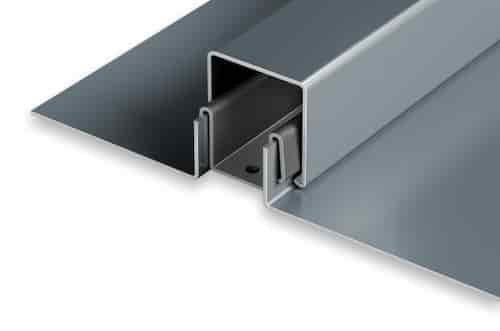
The Pac-Clad Peterson Snap-On Batten panels require a minimum slope of 3:12 and solid decking for proper installation. Available in several widths ranging from 11" to 18" with a 1.5" tall box seam. 24 gauge steel and .032 aluminum are the two choices for substrates.
Fall Protection For Snap-On Batten Panels
The Snap-On Batten panels have a box-seam style, so they can't work with fall protection devices like SSRA1, SSRA2, and SSRA3. Attempting to use set screws on a box seam would crush the box seam, causing permanent damage.
Instead, workers can use the Ridge Pro Steep Assist for Snap-On Batten series roofs with pitches from 7/12 to 12/12. For pitches less than 7/12, the Super Anchor 2815 is a good alternative. It provides secure anchorage points by mounting underneath the ridge cap.
Redi-Roof Standing Seam Panels
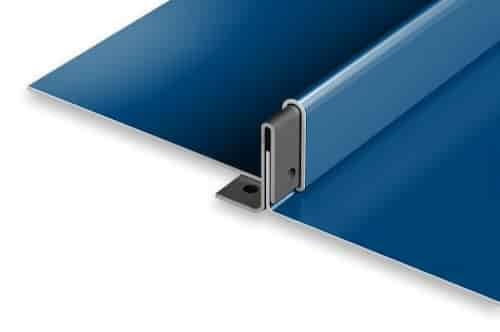
The Pac-Clad Peterson Redi-Roof Batten panels are installed over solid decking on roofs with a 3:12 or steeper pitch. They are available in 12",16", and 18" widths with 1-3/8" to 1-9/16" seam heights depending on the panel striations. Several widths ranging from 11" to 18" have a 1.5" tall box seam. 24 gauge steel and .032 aluminum are the two choices for substrates.
Fall Protection For Redi-Roof Standing Seam Panels
For Redi-Roof panels, SSRA1 seam clamps provide secure anchor points for workers. SSRA2 Adjustable Roof Jacks also help by providing a platform for walkboards on standing seam roofs, making it easier for workers to move during installation and maintenance. SSRA3 Anchor Plates offer even more flexibility. They allow horizontal lifeline deployment, ensuring safety across the entire roof surface.
It's important to note that SSRA1 Seam Anchors need a minimum of at least 24 gauge steel, so they only work with 24 gauge Redi-Roof panels. But if you're using the RidgePro Steep Assist or the Super Anchor 2815 anchors instead, they are compatible with all substrates of the Redi-Roof panels.
The Ridge Pro Steep Assist Anchor hooks over the roof's ridge and the Super Anchor 2815 mounts permanently under the ridge cap.
PAC 150-90 Single Lock/PAC 150-180 Lock Panels
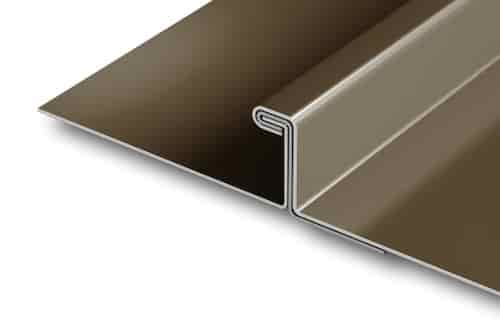
PAC-150 standing seam metal roofing panels feature a 1.5" seam height and can be mechanically seamed to 90 or 180 degrees. The minimum required slope is as low as 1:12, and panel widths range from 12" to 20". The Pac-150 series can be ordered in either 24 gauge steel or .032" aluminum substrates. Panel curving is available on the PAC-150 panels series.
Fall Protection For PAC 150 -90 Single Lock/150-180 Lock Panels
A trained safety professional should perform a site inspection for curved roof systems to determine how to establish anchor points. The following recommendations are for non-curved PAC 150 panels.
The steel PAC 150-90 and PAC 150-180 panels work well with SSRA1 anchor points, providing reliable attachment solutions for workers. You can add SSRA2 Adjustable Roof Jacks and SSRA3 Anchor Plates to the SSRA1 anchors. These adapters enable workers to use walk boards and horizontal lifelines to standing seam roof systems without penetrations. SSRA1 Seam Anchors require a minimum of 24 gauge steel, so they're only compatible with 24 gauge PAC 150 panels. However, for aluminum PAC 150-90 and PAC 150-180 panels, you can try the RidgePro Steep Assist or the Super Anchor 2815 anchors instead.
The Ridge Pro Steep Assist Anchor hooks over the roof's ridge to create a non-penetrating anchor point. Workers can mount the Super Anchor 2815 underneath the ridge cap for a permanent anchor point. These options provide secure non-penetrating anchor points for workers on PAC 150-90 and PAC 150-180 panels.
PACT-250 Panels
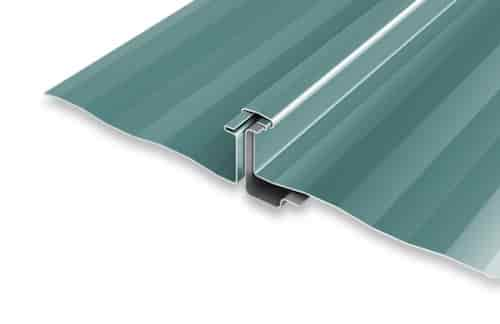
PAC T-250 metal roof panels can be installed on roof slopes as low as 1/2:12. The substrate options are 22—and 24-gauge steel or .032—and .040 aluminum, with a 2-5/8" seam height. The panels can be ordered in 16" or 18" widths.
Fall Protection For PAC T-250 Panels
For steel PAC T-250 panels, SSRA1 seam clamps are used as anchor points, offering non-penetrating anchor points for workers. SSRA2 Adjustable Roof Jacks also provide a platform for walkboards on standing seam roofs. SSRA3 Anchor Plates can be mounted on top of the SSRA1 anchors to mount horizontal lifelines for superior mobility.
It's important to note that SSRA1 Seam Anchors require at least 24 gauge steel, so they're compatible only with 22—and 24-gauge steel PAC T250 panels. However, for aluminum versions of the PAC T-250 panels, you can use the RidgePro Steep Assist Anchor and the Super Anchor 2815 for fall protection without needing to attach to the seams.
The Ridge Pro Steep Assist Anchor hooks over the roof's ridge, while the Super Anchor 2815 anchors are mounted underneath the ridge cap, creating a permanent tie-off point for all PAC T-250 metal roof systems.
Conclusion
Workers and contractors must understand the compatibility of fall protection products with PAC-Clad Peterson standing seam metal roof systems. PAC-Clad Peterson, a subsidiary of Petersen Aluminum Corporation (PAC), is renowned for its high-quality metal panels and roofing accessories, serving various markets with dependable products.
Keep in mind that curved panel systems require on-site inspections by a safety professional to determine the most appropriate safety systems. This article's recommendations are for non-curved Pac-Clad Peterson standing seam roof systems.
Each standing seam profile, from Snap-Clad to PAC T-250 panels, has specific fall protection requirements. For Snap-Clad and Tite-Loc panels, SSRA1 seam clamps, SSRA2 Adjustable Roof Jacks, and SSRA3 Anchor Plates are recommended for steel versions, providing reliable attachment solutions. However, aluminum panels may require alternative options like the RidgePro Steep Assist or the Super Anchor 2815 anchors.
Conversely, Snap-On panels and Snap-On Batten panels have distinct seam styles that don't accommodate traditional fall protection devices like SSRA1, SSRA2, and SSRA3 products. Instead, workers can rely on the Ridge Pro Steep Assist or the Super Anchor 2815 for secure anchorage points.
For Redi-Roof panels, SSRA products are ideal for steel versions, while the RidgePro Steep Assist or the Super Anchor 2815 anchors are suitable alternatives for aluminum panels.
Lastly, for PAC 150-90 and PAC 150-180 panels, SSRA1 anchor points are recommended for steel panels, with the RidgePro Steep Assist or the Super Anchor 2815 as alternatives for aluminum PAC 150 panel systems.
Understanding the compatibility of fall protection products with PAC-Clad Peterson standing seam metal roof systems is crucial for ensuring worker safety and compliance with industry standards. By selecting the appropriate fall protection measures tailored to each panel type, workers can perform their tasks safely and efficiently, minimizing the risk of accidents and injuries.
Call us today at 863-703-4522 to discuss your project, or visit www.StandingSeamRoofAnchor.com. Learn more about fall protection by reading OSHA's 48-page manual.

